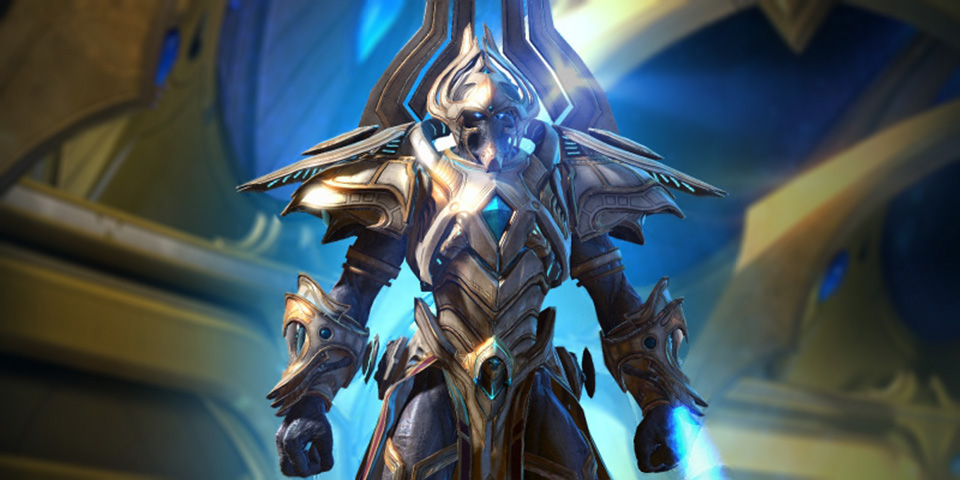StarCraft’s Imperfect Protoss Mirror My Indian Heritage
Aliens who ate sunlight dealt with caste and conformity too

Disclaimer: I respect all beliefs. Except those that discriminate.
It was all but invisible until it struck. Fictional races like StarCraft’s advanced Protoss serve as the perfect vehicle to represent real-world events. A direct approach earns a “political” tag from disgruntled gamers but fantasy titles bypass this setback. Some “inclusive” games use flavor text while others pick on more fundamental issues.
One game warped in age-old flaws like caste and conformity to the forefront.
StarCraft 2 helped me explore the invisible threads that dictate the patterns of Indian society. Cue the reflection on privilege and prejudice. There’s more to videogame representation than portraits and voices.
And the Protoss race shares more with us than you think.
Being yourself in the face of conformity
Caring about what other people think.
It’s a double-edged sword whose papercuts leave no visible scars. A finicky trait in the best of circumstances. In Indian culture, this sword becomes a glowing lightsaber.
Your neighbors become your advisors; your minds, their canvas.
Ideas that break the mold are nipped before they can take root. Anyone but a doctor or engineer is deemed either visionary (if successful) or short-sighted (sad writer noises). Even a marriage becomes a union between two flocks of sheep.
The sheep in question are big on conformity.
Reverence to different beings in the sky? Preposterous.
A difference in social(read-monetary) stature? Forget about it.
Incompatible castes? Ready the blades (I wish I was joking).
And that’s before considering supposed faults like a divorce or expressing opinions. A prospective partner is reduced to a list of stats, pieces that do not even begin to represent a person. The only desirable trait? Compliance.
It is this conformity that has led to lopsided development across multiple segments of society.

Divisions of caste, creed, culture
The Protoss are a proud spacefaring race.
Capable of telepathy and creating weapons with mere thoughts, their prowess is uncontested. But despite their scientific temperament, the race’s thousand-year life expectancy resulted in a backward social hierarchy. Ironic how progress brought about a structure rooted in inequalities.
The parallels to the once-pervasive Indian caste system looked me in the eye.
Among the Khalai faction, a caste system determines who is to be a leader, a warrior, or an engineer. Judicators, Templar, and worker Khalai bear similarities to India’s now-abolished caste system. Brahmins, Kshatriyas, and Vaishyas filled similar roles in a society where birth determined all.
Inter-caste conflict has shaped much of Protoss history.
Protoss civil wars and heretic hunts aside, the game’s narrative did touch on caste directly. As foes boarded a space vessel, occupied Protoss leader Artanis entrusted a Khalai scientist with the attack on an enemy base. Karax’s valiant victory led to the leader renouncing the archaic caste system.
Outside caste, the Protoss too have their share of outcasts and extremists.
While their sects aren’t completely explored, the “noble” Khalai scoff at the forlorn Nerazim and the ruthless Tal’darim. They are distinguished not only by their philosophy but by the source of their energy.
The difference boils down to a single decision.

Would you let go of the past to live in the present?
What if you could feel the fleeting thoughts of an entire race?
Centuries of hatred led to the Protoss rediscovering an empathetic bond that turned them into a unified communal society. This “path of ascension” led to a psionic link between every member of the Khala religion. It’s no surprise that not everyone was on board with the idea.
The Nerazim and Tal’darim never used the Khala. The former viewed it as the robbing of individuality. The latter never submitted to it.
— Blizzard wiki
While the Khala link let the Khalai Protoss transfer memories across generations, it chained them to the past. Their nerve cords served as this link, forgoing a bit of themselves to gain access to the Khala. And when Amon, a stereotypical evil entity, seized control of this psionic power, the Protoss had only seconds to make their decision.
Would you let go of the past to live in the present?
It’s a decision that anyone would struggle with. The conservative Protoss could not bear to part with something so intrinsic to their culture and fell prey to Amon’s control. Some severed their nerve cords (painlessly) just in time.
But pain isn’t always physical.
The survivors lamented the loss of something that had unified them for centuries. The isolation forged a new Protoss society not bound by the Khala, but by the unity of their race. The collectivism vs individuality theme lives on, not only in the StarCraft universe.
The shadows of the past writhe around us.
I believe we can be better.
